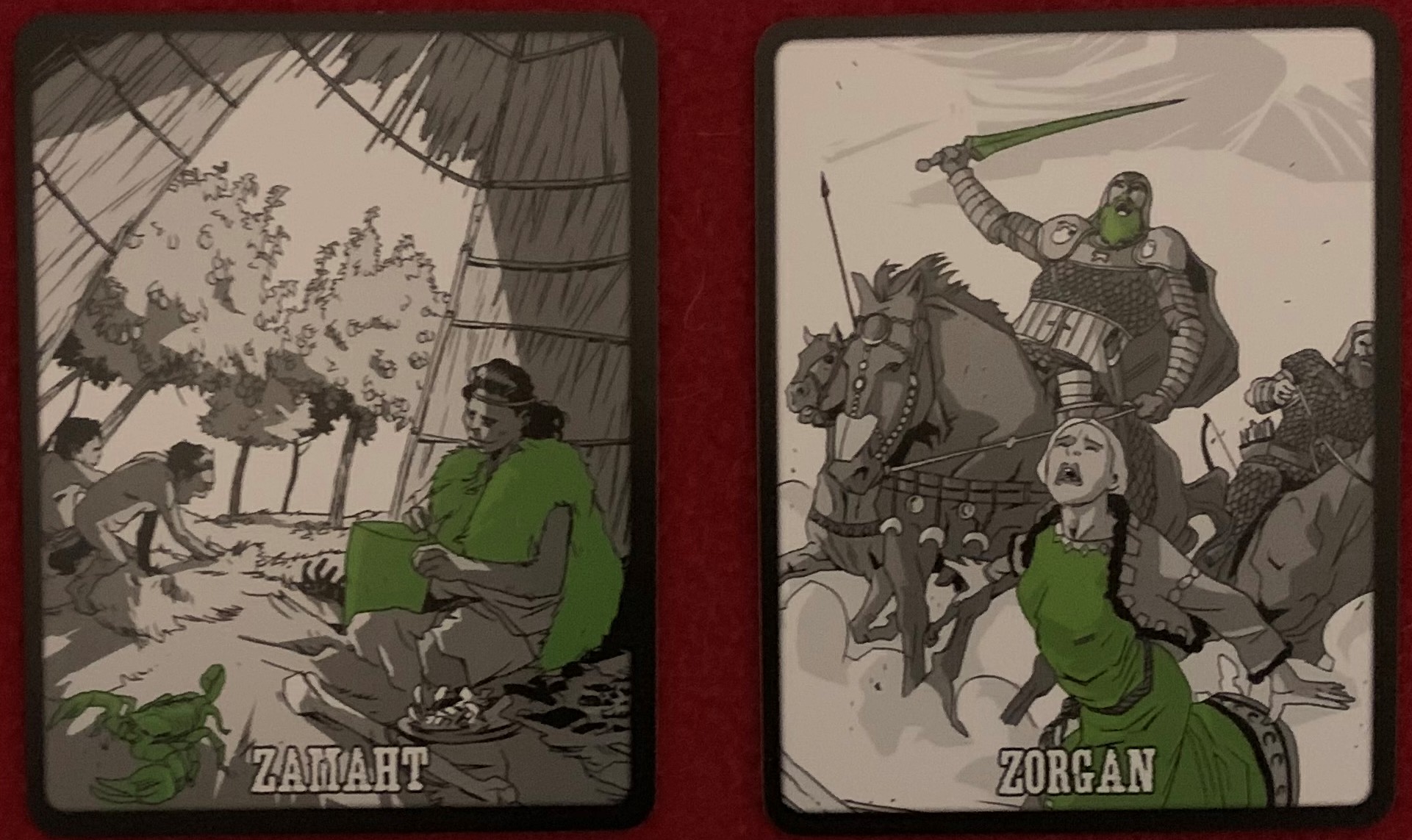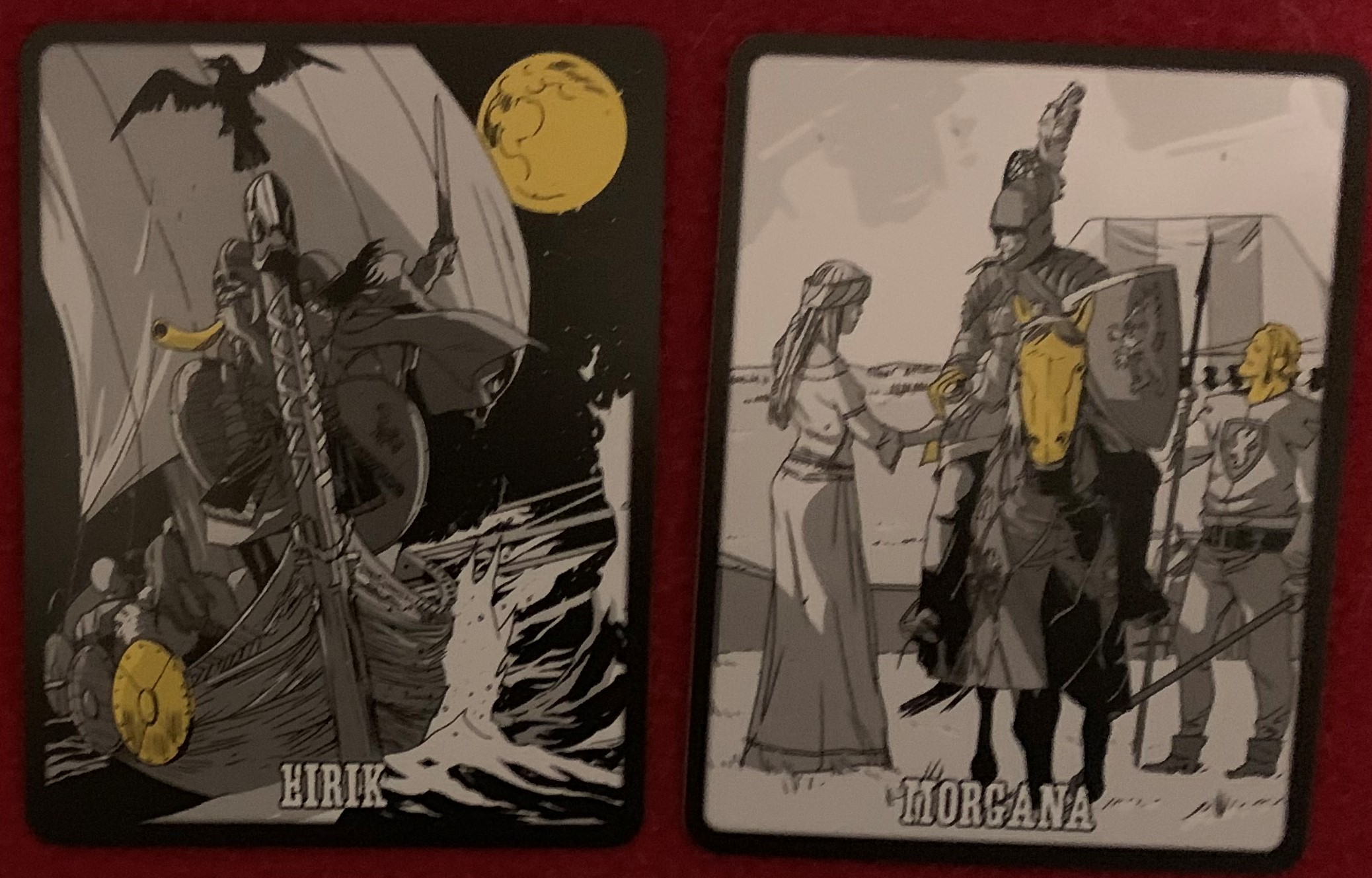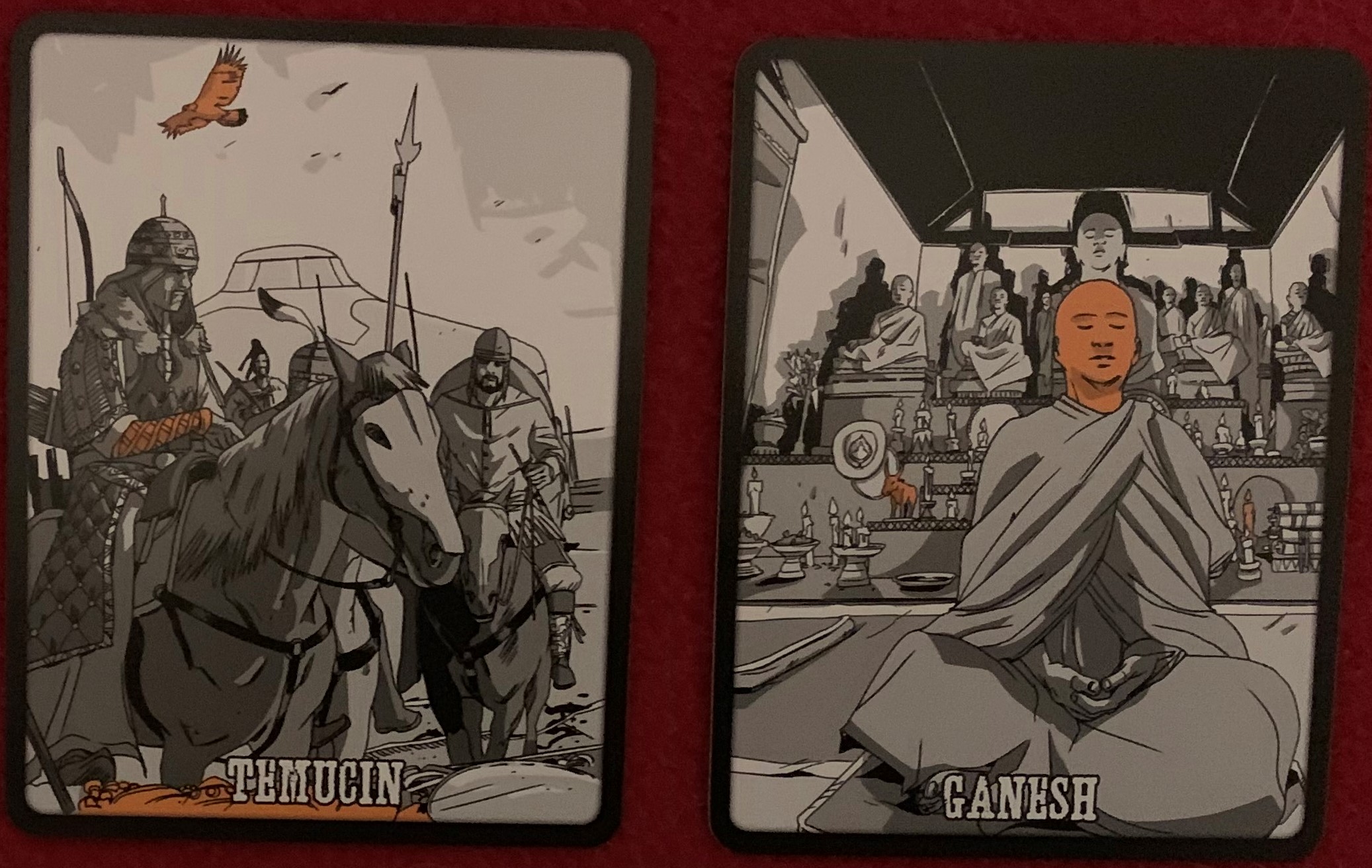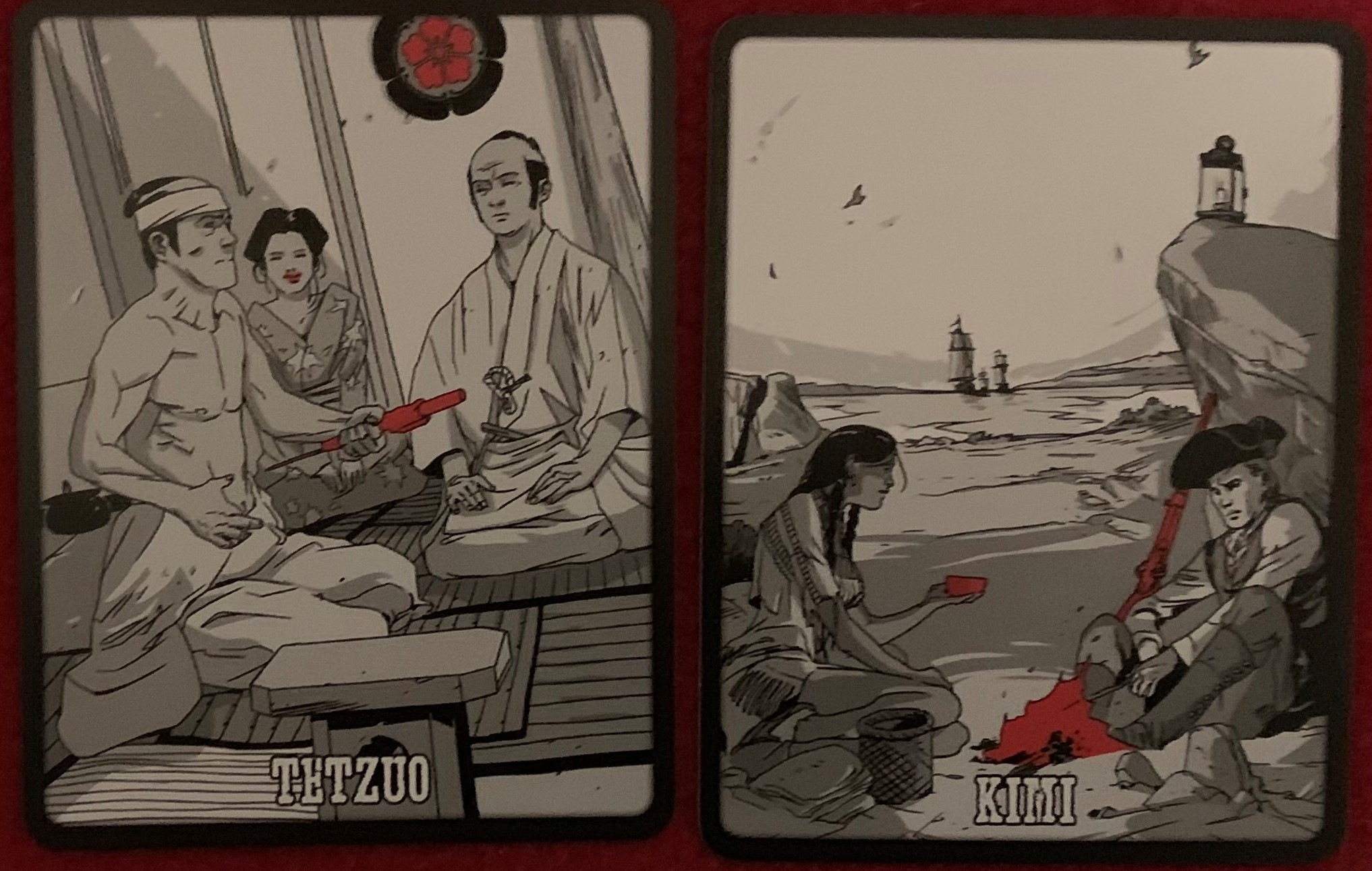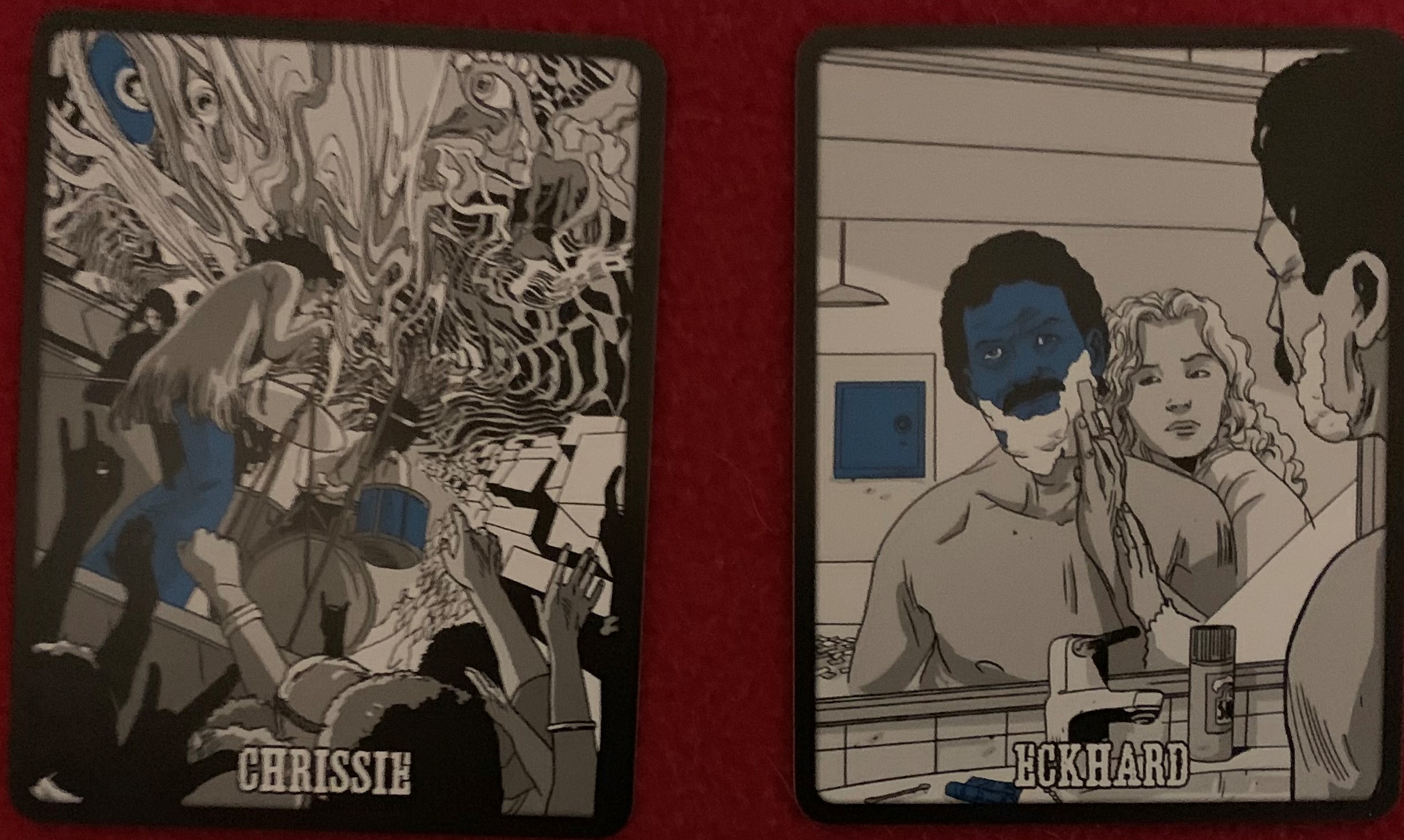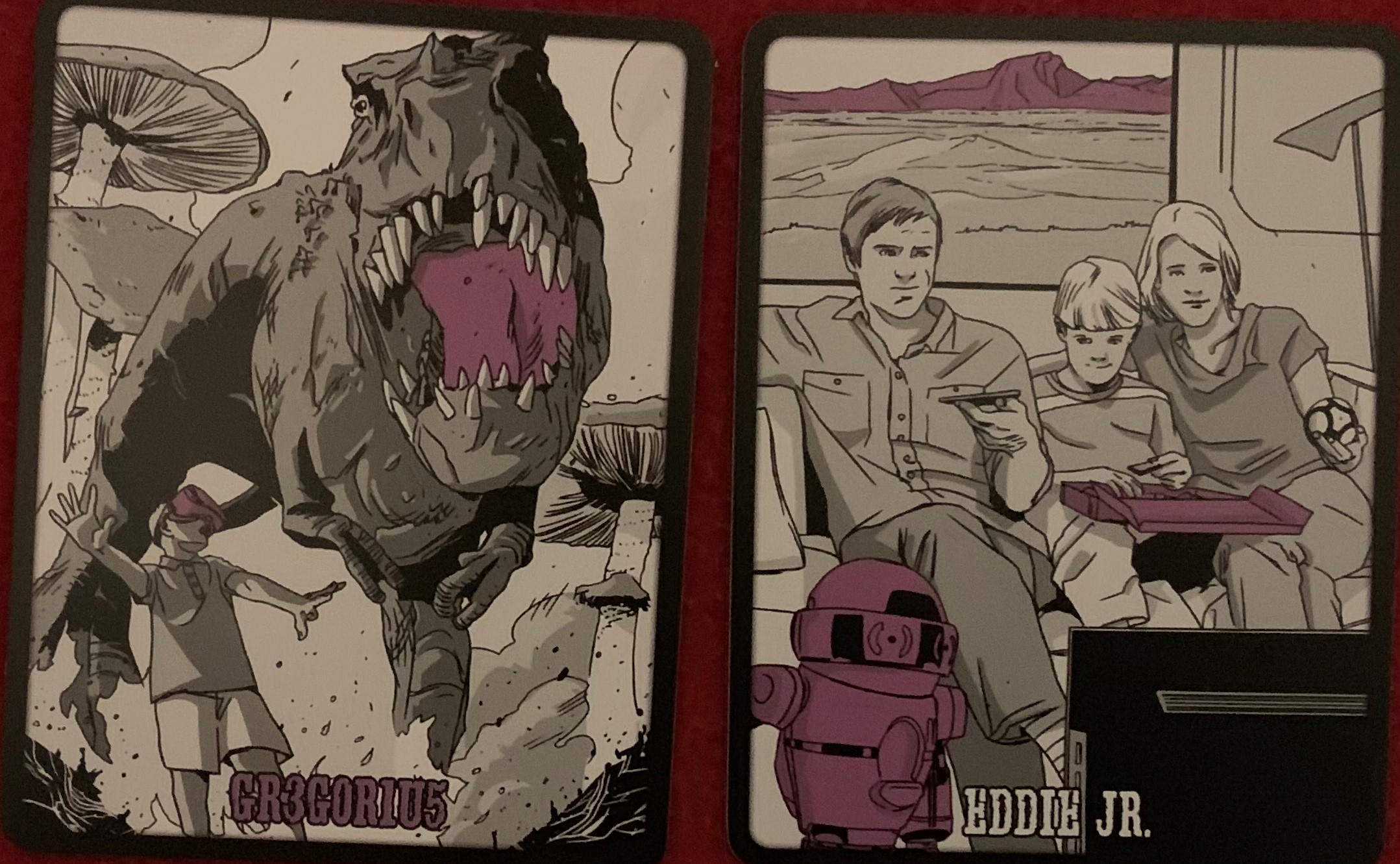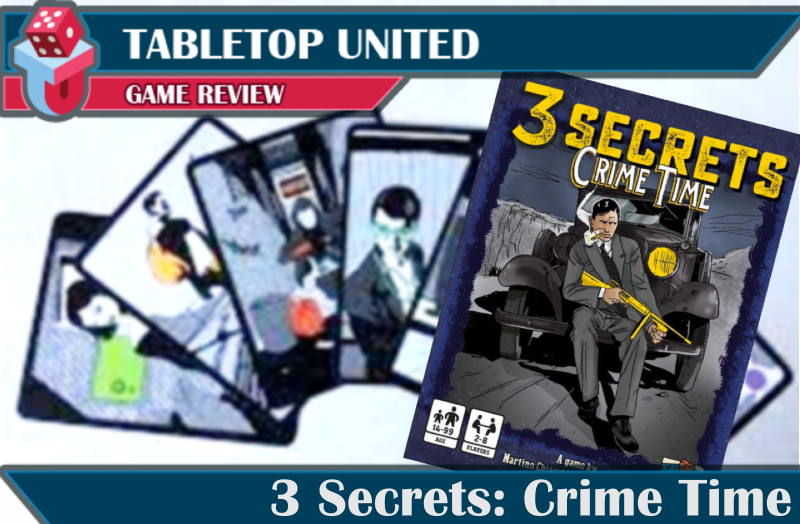
3 Secrets: Crime Time
Designer: Martino Chiacchiera and Pierluca Zizzi
Artist: Andrea Izzo and Stefano Landini
Publisher: DV Giochi
Year Published: 2019
No. of Players: 2–8
Ages: 14+
Playing Time: 15 Minutes
Main mechanic / Theme: 20 Questions, Cooperative
Step out of time to figure out crimes set in history.
Find more info on BoardGameGeek.com (hyperlink)
Overview
You are a team of investigators with a limited amount of time to uncover the secrets of a particular scene you’re witness to. You have a supercomputer that you can ask questions of, but the responses the computer can give are limited.
3 Secrets: Crime Time is a cooperative game of deduction. One player takes on the role of the computer while everyone else works with them to solve the 3 mysteries depicted in the scene on the front of the card. The computer is the only player who gets to look at the back of the card.
There is also a variant of playing 2 teams against each other. This version still requires 1 person to play the computer.
Like the original 3 Secrets, there are 7 levels of difficulty depicted across the 50 cards of the deck. They are identified by the color used on the front of the cards to show the 3 clues to the secrets.
We tried a couple of the scenarios after playing 3 Secrets: Crime Time. Gamers who have played and enjoyed 3 Secrets will find this version a compatible set of new scenarios to play through. The biggest difference is this set of scenarios includes scenes throughout history. Investigators must put themselves in the place and time to figure out the mysteries.
Gameplay and Mechanics
Determine the level of difficulty you want to play. Place a card with the color indicator out where everyone can see the picture. Decide who is going to play the computer. Give them time to read the back of the card. Start your timer.
Along with the original 2 variants to the rules from 3 Secrets (with or without app), there is now the option of playing a competitive team versus team option.
Cooperative Play
Everyone is working together to uncover the three secrets of the depicted scene in the picture.
The computer is limited to giving 1 of 4 responses to questions asked: “Yes,” “No,” “Not exactly,” and “It is irrelevant.” They also have some clues they can share but depending on which variation you are playing dictates how that is done. Players who like to be involved in discussing the game are not well suited for playing the computer.
The rest of the players can pretty much do what they want, except look at the back of the card. They can inspect the picture, discuss amongst themselves, ask questions, or guess a secret.
With the App
You have a total of 15 minutes to figure out the 3 secrets of the scene. It might be less because you are allotted 5 minutes for each secret. If you discover one of the secrets before 5 minutes lapses, the app is tapped, and the time starts for the next secret.
The computer can also give one of the clues during the 5-minute segment. When they do this action, the app is tapped for giving the clue and the remaining time is halved.
If the 5 minutes runs out without a correct guess of one of the secrets, then the computer reads one of the secrets. This takes it out of play for the rest of the game.
Without the App
You have 10 minutes to solve the mystery of the 3 secrets. The time is shorter because clues are given differently, and you don’t have an automatic timer working for you.
The guessing, discussing, and questioning are all the same. It is the giving of the clue from the computer that changes.
Every 3 minutes the computer can read one of the clues to the rest of the team. There is no docking of time.
When Time Runs Out
Scoring is done for everyone based on the number of secrets you identified. There is no individual winner or loser, it’s all about capturing the criminal or letting them get away.
Competitive Teams
This variant allows the players, excluding the computer, to divide into teams. Turns are taken back and forth between the teams until either a secret is guessed, or time runs out.
Theme, Artwork, and Layout
Working as a team, of one or two groups, to solve the secrets works well for this game of deduction. Just like the original, the variation of the party game of 20 Questions with a timer keeps the pace moving along.
There are two artists working on this set of mysteries: Andrea Izzo and Stefano Landini. The artwork is maintained from the original of simple black and white drawings, which works well to allow the players to see the details of the scene and the highlighted clues to the secrets.
The cards are oversized, making it easier to read what is on the back.
What worked
Some nice aspects of 3 Secrets: Crime Time are
- Option of cooperative or competitive teams
- Cabin game: compact size easy to transport
- Filler game: limited time of play and really no setup
Final thoughts
3 Secrets: Crime Time is a good sequel to the original 3 Secrets. The team rules can be used for the original. The style of the game hasn’t changed and the players who liked the original game felt comfortable with the new scenarios.
Because the new scenarios are more historical in nature, there was a little more struggle on one of the scenarios we played—remember what era you are playing in.
I recommend 3 Secrets: Crime Time for people who like the following.
- 3 Secrets
- 20 question
- Deduction
- Cooperative gaming
- Solving crimes
About the Author
Daniel Yocom does geeky things at night because his day job won't let him. This dates back to the 1960s through games, books, movies, and stranger things better shared in small groups. He's written hundreds of articles about these topics for his own blog, other websites, and magazines after extensive research along with short stories. His research includes attending conventions, sharing on panels and presentations, and road-tripping with his wife. Join him at guildmastergaming.blogspot.com.
